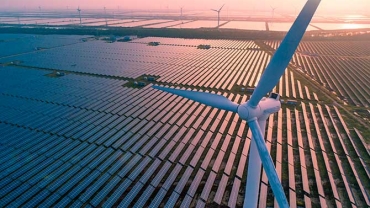
Bright future for offshore wind in Europe
Europe has become a global frontrunner in offshore wind, and leads the charge to make offshore wind a cost-competitive technology. Recently, two tenders of projects in the Netherlands and Germany have resulted in subsidy free projects. Going forward we expect the sector to develop on the basis of its competitive advantage over other renewable sources.
We expect offshore wind resources to make a significant contribution to Europe’s energy transition, particularly in North-West Europe. Large-scale offshore wind represents a significant opportunity to decarbonise the energy system: resources are stable and abundant, and public acceptance is relatively high. And while subsidies have played a large role in the roll-out of offshore wind to date, many governments are now phasing out subsidies for the sector in the long to medium term.

Challenges for the sector
But the subsidy free world holds a number of challenges for the entire offshore wind supply chain. Firstly, the realisation of projects requires strong project management capabilities to ensure a timely delivery, and within budget. This is even more challenging as new technologies mature and enter the market at an unprecedented pace and the capacity per wind turbine still increases.
Secondly, subsidy free projects lead to strong price pressures throughout the supply chain. Whether companies can remain profitable depends on their market power, negotiation skills and ability to control costs.
A final important question that arises is: who will cover power market risks in a zero-subsidy future? Offshore wind developers face a new reality of corporate procurements of renewable energy as companies wish to decrease their carbon footprint and are increasingly interested in merchant projects. Corporate procurement is usually established through corporate Power Purchase Agreements (“PPAs”), which are contracts whereby an industrial user purchases electricity directly from the energy producer, cutting out the utilities as the middleman. These contracts could help lower power market risks for owners of offshore wind farms.
Our view on the important market developments
With this publication, we would like to share our views on important market developments in offshore wind, and update you on the market design and the confirmed project pipeline in six key offshore wind territories in Europe. While cross-border cooperation is increasing, regulatory regimes for offshore wind remain largely national. Subsidy, tender and tax regimes, as well as rules surrounding spatial planning, can all look rather different from one territory to another, and increases the complexity in projects for all stakeholders. With the insights included in this publication we aim to reduce some of this complexity.
Contact us

Global Leader, P&U and EU&R, Partner, PwC Netherlands
Tel: +31 (0)65 160 91 78

Partner, Energy transition and sustainable energy, PwC Netherlands
Tel: +31 (0)65 160 08 61


















